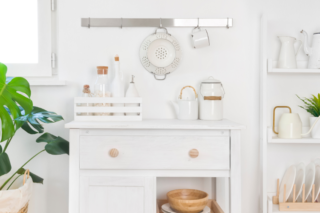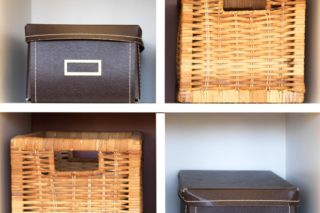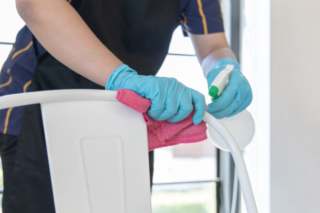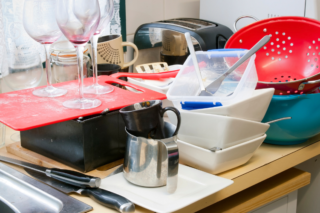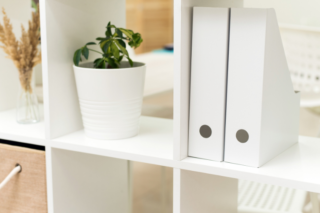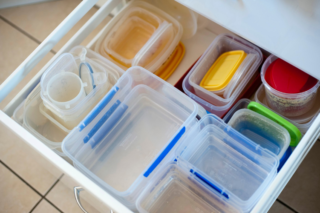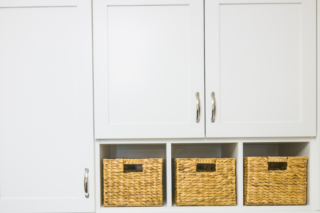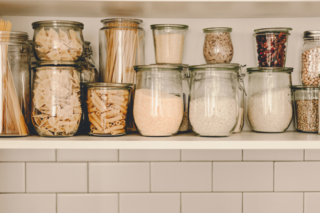Recognizing Toxic Relationships: Signs and Symptoms
Building and maintaining healthy relationships is essential for our well-being. However, it’s not always easy to identify when a relationship has turned toxic. Toxic relationships can have a severe impact on our mental health, self-esteem, and overall happiness.So, how do we recognize toxic relationships? Here are some signs and symptoms to watch out for:1. Constant criticism and belittling – If your partner or friend frequently puts you down, dismisses your feelings, or constantly criticizes you, it may be a sign of a toxic relationship.2. Controlling behavior – A toxic partner or friend may try to control your every move, including who you talk to, what you wear, or where you go. This behavior can leave you feeling trapped and powerless.3. Lack of respect – A healthy relationship is built on mutual respect. If your partner or friend consistently disrespects your boundaries, opinions, or values, it may be time to reevaluate the relationship.4. Gaslighting – Gaslighting is a manipulative tactic used to make someone question their own sanity or perception of reality. If your partner or friend frequently denies your experiences or makes you feel crazy, it may be a sign of a toxic dynamic.5. One-sided relationships – In a healthy relationship, both parties should be invested in each other’s well-being. However, if your partner or friend only seems to care about their own needs and wants, it may be a sign of a toxic dynamic.If you recognize any of these signs in your relationship, it’s essential to take action. This may mean setting boundaries, having a difficult conversation, or even ending the relationship altogether. Remember, your mental health and well-being should always be a top priority.Letting Go of Toxic Relationships: The Art of Human Connection Decluttering
The Emotional Toll of Holding onto Toxic Connections
We all have connections in our lives, whether they be family, friends, co-workers or acquaintances. But what happens when those connections turn toxic? The emotional toll of holding onto toxic connections can be devastating.Toxic connections can come in many forms – from an emotionally abusive partner to a manipulative friend. These relationships can drain us emotionally, leaving us feeling exhausted and depleted. Yet, for some reason, we still hold on to them.One of the reasons we hold onto toxic connections is fear. Fear of being alone, fear of being rejected, or fear of not knowing what life would be like without that person. It’s important to recognize that these fears are not rational and are only holding us back from living a happy life.Another reason we hold onto toxic connections is familiarity. We may have known this person for a long time, or they may be a family member we feel obligated to keep in our lives. However, just because we’ve known someone for a long time doesn’t mean they are good for us.So, how do we let go of toxic connections? The first step is recognizing that we deserve better. We deserve to be surrounded by people who lift us up, not tear us down. It’s okay to set boundaries and distance ourselves from toxic people.Another step is to surround ourselves with positive and supportive people. This can be a new group of friends or even seeking therapy to help us work through our emotions and learn to let go of toxic connections.In conclusion, holding onto toxic connections can have a severe emotional toll on our lives. It’s important to recognize when a connection has become toxic and take steps to let go and move on to healthier, happier relationships. Remember, we are worthy of love and respect, and we don’t have to settle for anything less.
The Benefits of Letting Go: Healing and Growth
Letting go of toxic relationships and negative emotions can be difficult, but it is essential for healing and growth. Holding onto grudges and resentment only causes more pain and suffering, whereas letting go can bring peace and clarity.One of the main benefits of letting go is the release of emotional baggage. When we hold onto negative emotions, such as anger, resentment, and sadness, they can weigh us down and affect our physical and mental health. Letting go of these emotions can be a liberating experience, allowing us to move forward and live a happier, healthier life.Another benefit of letting go is the opportunity for personal growth. When we let go of toxic relationships and negative emotions, we create space for positive experiences and personal development. By facing our fears and insecurities head-on, we can learn and grow from our experiences, becoming stronger and more resilient individuals.Letting go can also improve our relationships with others. When we let go of negative emotions and focus on positive emotions, such as gratitude and forgiveness, we can improve our relationships with others. By letting go of grudges and resentment, we can create a more compassionate and understanding world.In conclusion, the benefits of letting go are numerous and essential for healing and growth. By releasing emotional baggage, creating opportunities for personal growth, and improving our relationships with others, we can live happier and more fulfilling lives. So let’s practice letting go and embrace the beauty and joy that life has to offer.
The Art of Setting Boundaries: Protecting Yourself from Toxicity
Setting boundaries is an important part of maintaining a healthy and balanced life. However, it can be challenging to do so, especially when dealing with toxic people or situations. In this blog post, we will explore the art of setting boundaries and how it can help protect you from toxicity.Firstly, it is crucial to understand what boundaries are and why they are essential. Boundaries are the limits we set around ourselves to protect our physical, emotional, and mental well-being. They define what we will and will not tolerate from others and help us maintain healthy relationships. Without boundaries, we can become overwhelmed, stressed, and drained by the demands of others.When it comes to toxic people or situations, setting boundaries is even more critical. Toxicity can come in many forms, including manipulation, emotional abuse, and negativity. These behaviors can be harmful to your mental and emotional health, leading to anxiety, depression, and low self-esteem. By setting boundaries, you can protect yourself from these negative influences and maintain a healthy sense of self.So, how do you set boundaries? Firstly, it is essential to be clear about your needs and values. Think about what is important to you and what you are not willing to compromise on. Then, communicate these boundaries clearly and assertively to others. It can be challenging to do so, especially if you have been in toxic relationships before, but it is crucial for your well-being.Another important aspect of setting boundaries is knowing when to say no. Saying no can be difficult, but it is essential to maintain your boundaries and protect your time, energy, and resources. Remember that it is okay to prioritize yourself and your needs.In conclusion, the art of setting boundaries is a crucial skill for protecting yourself from toxicity. By defining your limits and communicating them clearly, you can maintain healthy relationships and prioritize your well-being. Remember that it is okay to set boundaries and say no, and that doing so can lead to a happier, healthier life.
Navigating the Process of Letting Go: Coping Strategies and Support
Letting go of material possessions and clutter can be a challenging process. It requires both logical and emotional effort. While it may be easy to understand the benefits of decluttering, such as reducing stress and increasing productivity, it can be difficult to let go of sentimental items or items that we feel attached to. However, there are coping strategies and support systems that can make the process easier.One coping strategy is to start small. Rather than tackling a whole room or closet at once, start with a drawer or a shelf. This will help build momentum and make the process feel less overwhelming. It’s also important to take breaks and not rush the process. Set aside a designated time each day or week to work on decluttering, but don’t feel pressured to finish everything at once.Emotional support can also be a valuable tool in the decluttering process. Talk to friends or family members about your goals and struggles. They may offer practical advice or simply offer emotional support and encouragement. It can also be helpful to seek the guidance of a professional organizer or therapist who specializes in clutter and hoarding disorders.Another important coping strategy is to shift your mindset. Instead of focusing on what you are giving up, focus on what you are gaining. For example, decluttering can lead to a more peaceful and organized home, which in turn can lead to increased productivity and a better quality of life. By reframing the process in a positive light, it can become easier to let go of possessions.Finally, don’t forget to reward yourself along the way. Celebrate small victories, such as decluttering a shelf or donating a box of items. Treat yourself to a favorite meal or activity as a way to acknowledge your progress and motivate yourself to continue.Overall, the process of letting go can be a challenging but rewarding experience. By utilizing coping strategies and seeking support, it can become easier to navigate the emotional and logical aspects of decluttering. Remember to start small, seek support, shift your mindset, and reward yourself along the way.
Moving Forward: Rebuilding Healthy Relationships
Relationships are an essential part of our lives, and the quality of our relationships can significantly impact our mental health and well-being. However, sometimes relationships can become strained or damaged, and it can be challenging to know how to move forward and rebuild healthy relationships.One crucial step in rebuilding a healthy relationship is to communicate openly and honestly with the other person. This means expressing your feelings and needs while also being willing to listen to the other person’s perspective. It’s essential to approach the conversation with an open mind and a willingness to compromise.Another important factor in rebuilding a healthy relationship is to take responsibility for your actions and apologize if necessary. Admitting fault and taking steps to make amends can go a long way in rebuilding trust and strengthening the relationship.It’s also important to set boundaries and expectations for the relationship moving forward. This can include discussing what behaviors are acceptable and unacceptable and establishing clear communication channels. By setting boundaries and expectations, both parties can feel respected and understood.Finally, it’s essential to have patience and give the relationship time to heal. Rebuilding a healthy relationship takes time and effort, and it’s essential to remain committed to the process. It’s okay to take breaks or seek outside help if needed, such as couples counseling or therapy.In conclusion, rebuilding a healthy relationship requires communication, taking responsibility, setting boundaries, and having patience. By following these steps, it’s possible to move forward and rebuild a stronger and healthier relationship.
The Importance of Self-Care in the Process of Decluttering Toxic Connections
The process of decluttering toxic connections can be emotionally draining and overwhelming. It’s important to remember that taking care of yourself during this process is crucial. Self-care can help you maintain a positive mindset and stay motivated to achieve your goals. In this blog post, we’ll discuss the importance of self-care and how you can incorporate it into your decluttering process.Firstly, let’s define what self-care means. Self-care is any activity that you do to take care of your mental, emotional, and physical health. It’s a way to prioritize your well-being and ensure that you’re functioning at your best. During the process of decluttering toxic connections, self-care can help you deal with the range of emotions that you may experience. From guilt and regret to anger and sadness, self-care can help you process these emotions in a healthy way.Next, let’s talk about how you can incorporate self-care into your decluttering process. Here are a few suggestions:1. Take breaks. Decluttering can be physically and mentally exhausting. It’s important to take breaks to rest your mind and body. Go for a walk, take a nap, or do something that you enjoy to recharge your batteries.2. Practice mindfulness. Mindfulness can help you stay focused on the present moment and reduce stress and anxiety. Take a few minutes each day to practice mindfulness. You can try deep breathing, meditation, or yoga.3. Connect with supportive people. Surrounding yourself with supportive people can help you stay motivated and positive during the decluttering process. Reach out to friends or family members who are good listeners and can offer you encouragement.4. Set boundaries. Setting boundaries can help you protect your mental and emotional health. If you need to distance yourself from toxic people, it’s important to do so. Don’t feel guilty about putting yourself first.In conclusion, self-care is crucial during the process of decluttering toxic connections. It can help you maintain a positive mindset and stay motivated to achieve your goals. By taking breaks, practicing mindfulness, connecting with supportive people, and setting boundaries, you can incorporate self-care into your decluttering process. Remember to prioritize your well-being and give yourself the care and attention you deserve.
Embracing a Life Free from Toxicity: Finding Joy and Peace in Human Connection.
As human beings, we crave connection with others. However, toxic relationships can drain our energy and leave us feeling emotionally exhausted. It’s important to recognize when a relationship is toxic and take steps to remove ourselves from it.One way to do this is by setting boundaries. Boundaries are a way of protecting ourselves and our emotional well-being. We can set boundaries by saying no to things that don’t align with our values or by limiting our time with people who drain our energy.Another way to embrace a life free from toxicity is by surrounding ourselves with positive people who uplift us and bring out the best in us. This can be done by joining social groups or attending events where we can meet like-minded individuals who share our interests.In addition to setting boundaries and surrounding ourselves with positive people, it’s important to practice self-care. Self-care can take many forms, such as taking a bubble bath, going for a walk in nature, or simply taking a few minutes to meditate. When we take care of ourselves, we are better equipped to handle the challenges that come our way.Embracing a life free from toxicity allows us to find joy and peace in our human connections. We are able to build meaningful relationships with people who bring out the best in us and support us in our journey. So, let’s take a step back and evaluate our relationships. Let’s set boundaries, surround ourselves with positive people, and practice self-care. Let’s embrace a life free from toxicity and find joy and peace in our human connections.


